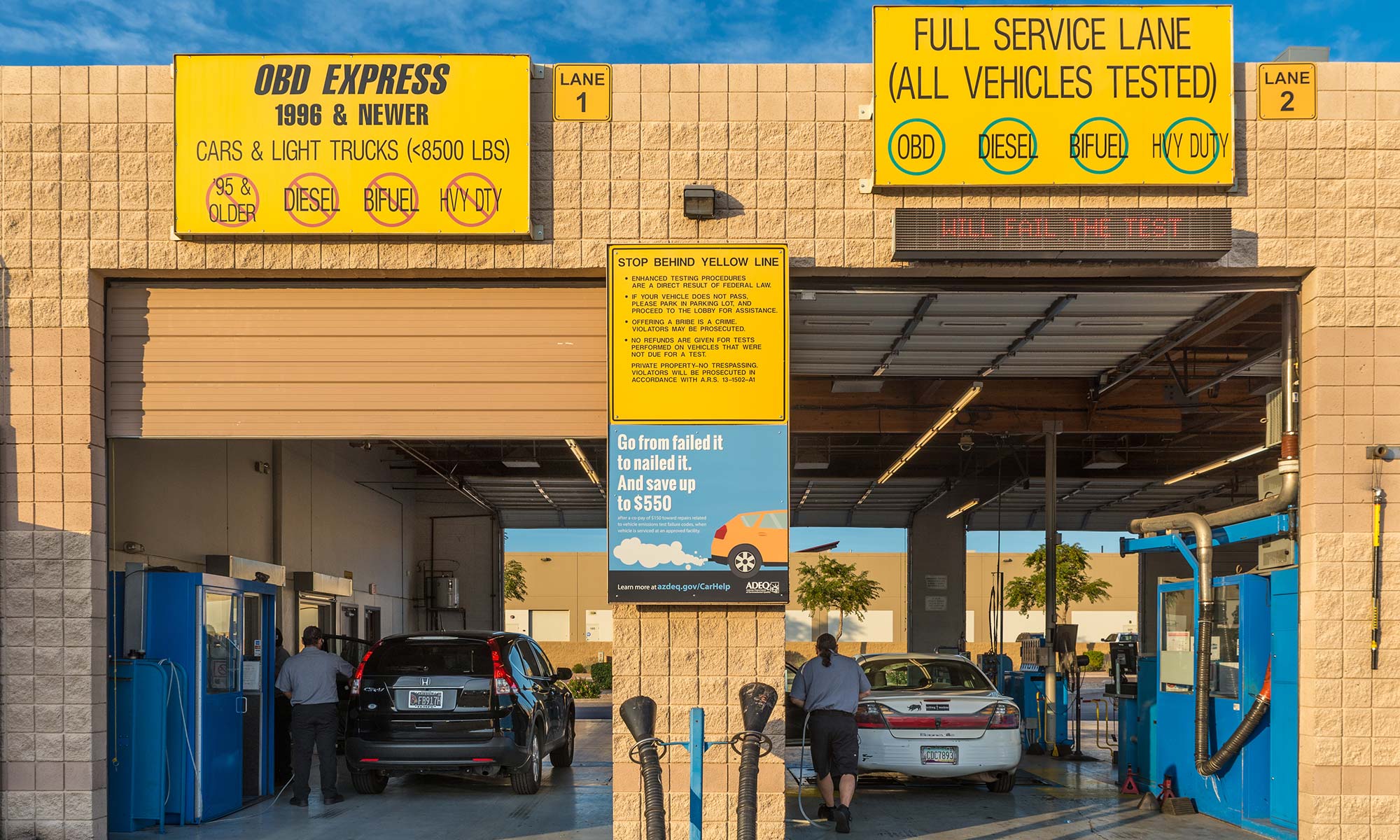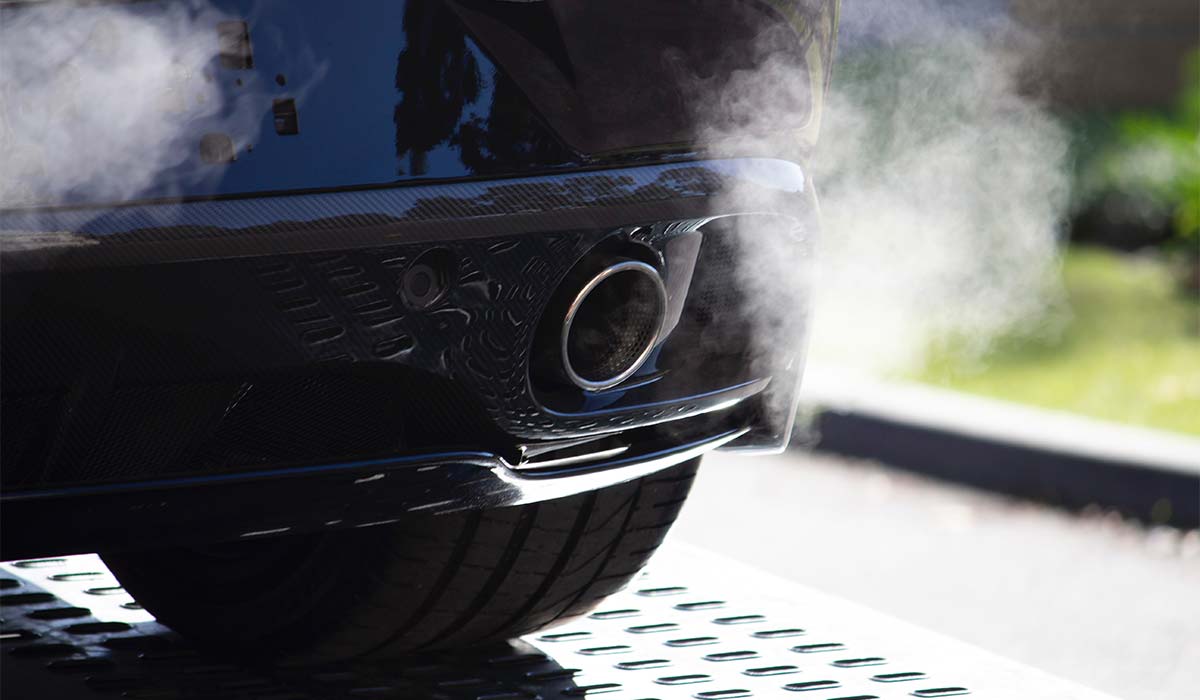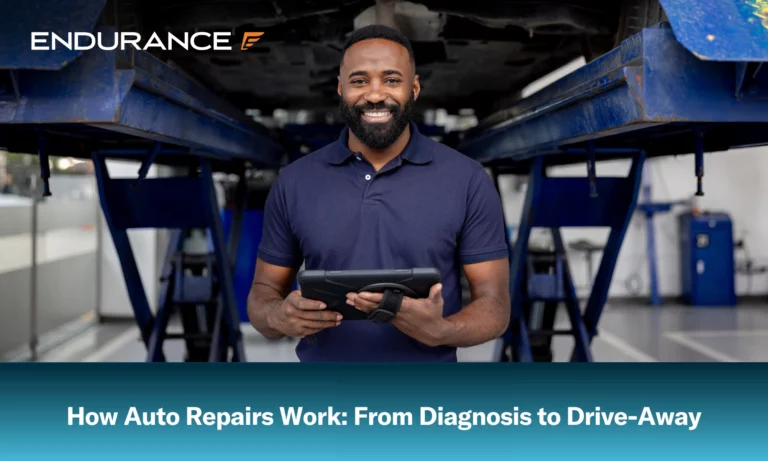What Is an Emissions Test?

Depending on where you live, certain states require emissions tests based on the make, model or year of your car. Auto technicians administering the test generally look at the carbon output of your vehicle and other mechanical factors that affect air quality or produce excess pollution.
Before you take your car for an emissions test, review these tips to become more informed about what the test is and how to make sure your vehicle passes the first time.
What Is Emissions Testing?
Emissions testing is the measurement of air pollutants, hydrocarbons, and carbon monoxide, as well as carbon monoxide and oxygen that your vehicle produces when it is running. Many states have emissions standards set by the Environmental Protection Agency (EPA) that each car needs to meet before being registered in the state. This process ensures that smog levels can be regulated to help combat air pollution.
There are two different types of emissions tests: an on-board diagnostics (OBD) inspection and an exhaust analysis. Both tests review how much pollution your car is emitting into the air. Whether or not your motor vehicle passes the test will depend on the results.
You will need to take your vehicle to an official emissions testing facility to receive your passing certification. These facilities have all the equipment to test your car and ensure that it performs up to the state standards. It will usually take under an hour and many facilities even can renew your registration in-house.
Do I Need an Emissions Test?
Emissions inspections started in 1966 in California to help improve air quality and have since expanded to 32 different states. If you live in one of these states that require it, you will have to undergo an emissions test before renewing your vehicle’s registration. This is sometimes done annually or biannually, depending on your state.
Standards vary for each state, but there are some exemptions. For example, older vehicles manufactured in the 1960s or 1970s may not require a test. This is sometimes also true for newer vehicles under five years old.
You will generally find out if you need a car emissions test when you receive your notice for renewal of registration. Before you can renew with the DMV, you will have to present your passing emissions inspection. You’ll usually get enough notice to complete the test before your renewal deadline. Check every renewal notice you get from the DMV to see if the time has come for your particular vehicle to get an inspection.

What Gets Checked During an Emissions Test?
On-Board Diagnostics (OBD) Emissions Inspection
Your car’s onboard computer will tell the emissions technician many things about how your vehicle performs emissions-wise. It will check things like your check engine warning light and various indicators to know if it is properly controlling harmful smog.
It should be noted that if you have recently disconnected your battery, several of these indicators will need to be reset for the car to pass the test. You can do this by driving the vehicle at various speeds for a certain number of miles. If your car’s indicators aren’t reset, the technician will tell you how many miles you need to drive to get them ready.
Exhaust Gas Analysis
If your vehicle is an older model year and does not have an onboard computer, the technician can use an exhaust gas analyzer. This device hooks up to the tailpipe and collects a sample of the emissions for analysis. This test will measure the amount of benzene, hydrocarbons and carbon monoxide that your vehicle is putting out.
Acceleration Simulation Mode Test
The acceleration simulation mode test is a less common way of testing a vehicle’s emissions. During this type of test, your car will be put on a treadmill-type device and put through the motions of acceleration and driving. This is usually only done if the exhaust gas analysis can not be performed while the car is idling.
Why Might I Fail an Emissions Test?
HC or CO Levels
If your vehicle emits a higher level of hydrocarbons or carbon monoxide allowable by the EPA, it may fail the emissions test. This is usually due to an issue with the fuel injection or an exhaust leak somewhere in the vehicle. The technician can advise you why the car failed and what you can do to remedy the situation.
Check Engine Light On
If your check engine light is on when the test begins, the car will automatically fail and you’ll have to come back for a retest. Because of this, if you know this warning light is on, it is best to get your vehicle serviced beforehand. This warning light could be due to several things, but it is usually a good indicator that your vehicle is not operating up to your state’s emissions standards.
OBD Reader Failure
If the OBD reader cannot analyze your motor vehicle’s emissions indicators, the technician will not be able to run the OBD test. This is usually due to the indicators being reset and not allowing enough time to turn back on completely. The technician will help you figure out how to get these indicators back online to run the reading.
No Emissions Control Equipment
If your car doesn’t have the required emissions control system equipment, it will not be allowed to drive on the road legally. This equipment includes oxygen sensors and, in some states, a catalytic converter. Check with your state’s equipment requirements to ensure that you have everything you need before your emissions test.
Vapor Leak
A vapor leak is usually the result of a gas cap that is not properly sealing. This generally happens in older cars where the gas cap seals have started to deteriorate. Luckily, this is a relatively inexpensive fix and can usually be remedied the same day.
Frequently Asked Questions (FAQs)
- Will a car burning oil pass emissions?
Burning oil on its own will generally not affect the results of your emissions test. However, it could have a detrimental effect on the emissions equipment in your vehicle. For example, burning oil could wear down the oxygen sensor, resulting in a failed emissions test.
- Can you pass emissions with a bad transmission?
If your vehicle has a bad transmission, it could affect its ability to get up to 55 mph, which could technically fail you on the emission test. However, a simply slipping or not as efficient transmission will not cause the car to fail. This is especially true if the test is run simply through the onboard computer, which does not run checks on the transmission.
- What do I need to bring for an emissions test?
You should bring the test notice that you received with your renewal notice to get an emissions test. Your registration card may also be necessary, along with your driver’s license. If you only have an expired registration, that will be fine. The technicians generally only need to check that you own the motor vehicle.
Get Ready For Your Emissions Test with EnduranceAdvantageTM
Keeping your car properly maintained is the key to a worry-free emissions test. Be sure that your vehicle is up to the standards of your state’s emissions regulations. And, with the protection of EnduranceAdvantage, we offer up to $3,500 in maintenance coverage, including regular oil changes and routine maintenance to keep your car safely on the road.
Present your Endurance auto protection contract at any licensed repair shop and they will take care of the rest. Request a free, no-obligation quote today.













Alex has worked in the automotive service industry for over 20 years. After graduating from one of the country’s top technical schools, he worked as a technician achieving a Master Technician certification. He also has experience as a service advisor and service manager. Read more about Alex.